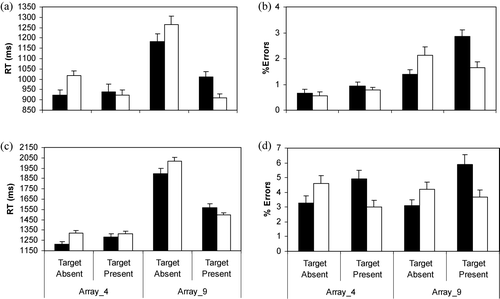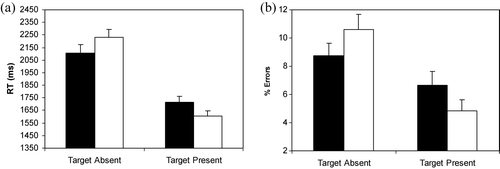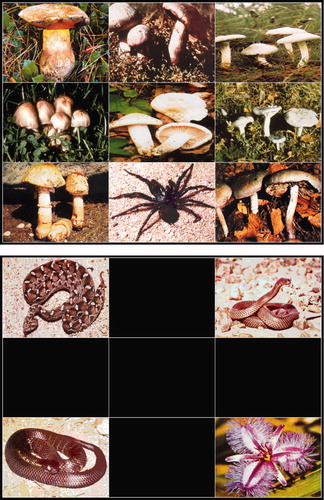Figures & data
Figure 2. (a,c) Mean reaction times (RTs) and (b,d) percentages of errors (+SE) for (a,b) adults in Experiment 1 and (c,d) children in Experiment 2 during target-absent and target-present conditions as a function of the fear-relevance of the background items in the Array_4 and Array_9 tasks. In target-present conditions, targets are either snakes or spiders in non-fear-relevant backgrounds and mushrooms or flowers in fear-relevant backgrounds. (▪) Fear background; (□) non-fear background.

Figure 3. (a) Mean reaction times (RTs) and (b) percentages of errors (+SE) for children in Experiment 3 during target-absent and -present conditions as a function of the fear-relevance of the background items in the Array_9 task. In target-present conditions, targets are either snakes or spiders in non-fear-relevant backgrounds and mushrooms or flowers in fear-relevant backgrounds. (▪) Fear background; (□) non-fear background.

Table I. Child- and parent-report questionnaire measures for high- and low-fearful children
Figure 4. Mean reaction times (RTs) and percentages of errors (+SE) for low-fearful and high-fearful children in Experiment 3 during target-absent and -present conditions as a function of the fear-relevance of the background items in the Array_9 task. In target-present conditions, targets are either snakes or spiders in non-fear-relevant backgrounds and mushrooms or flowers in fear-relevant backgrounds. (▪) Fear background; (□) non-fear background.

